The MGA With An Attitude
CYLINDER HEAD for MGA 1600-MK-II -- CH-100A
The 1600-MK-II engine (1622cc) is substantially different from the prior 1500/1600 engines. The crankshaft is a bit stronger with thicker webs and slightly narrower main bearings. The cylinder head has one size larger valves, a little better porting and larger volume combustion chamber (43cc vs. 38cc in the "15" head). The head is marked "16" on top at the back. These engines and heads are a bit rare, having been used for only 14 months of production in the MGA.
Some early 1622 engines (about 300 units) were apparently fitted with heads marked "15", but having the combustion chambers machined out to the new "16" specifications with larger valves. Speculation is that the new "16" head castings were not ready in time for the intended production date of the new 1600-MK-II model car, so a few hundred of the "15" heads were machined to meet the "16" head specifications.
Photos here came from an early 1622 engine with "15" head machined to "16" spec's. The engine number is 16GC-U-H-490. Valves are certainly the larger dimensions. Combustion chamber has been milled to larger size, but no way to tell if this is original or has been done more recently. Combustion chambers are 3.27" at widest valve to valve. Head thickness is original 3.187". The combustion chamber has been milled, but not milled all the way around. It's still rough(ish) casting where it's siamesed to #2, and some other areas. When compared to an as-cast original "16" head the dimensions of this machined out "15" head are identical.
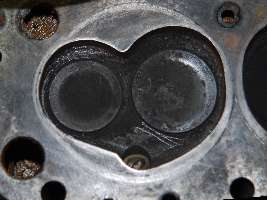
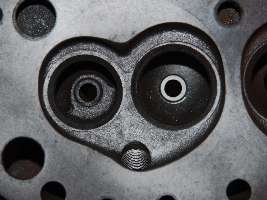
Machined "15 head" - - - - - As-cast "16" head
Addendum, 20 July 2016
Now we have another curiosity. I thought this should never happen, but there seems to be two different castings with the same casting number. Photos below are supplied by Charlie Adams in Fairfax, Virginia, USA.
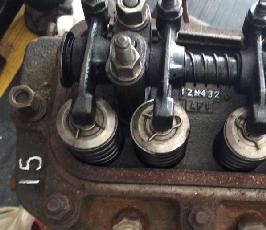
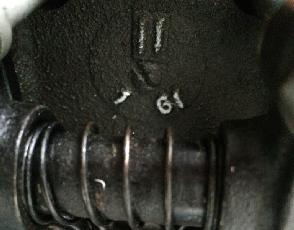
Above, casting number 12H432 with "15" on top, Jan 1961
Below, two castings 12H432 with "16" on top, Apr and Jun 1961
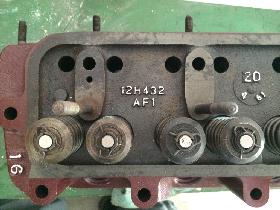
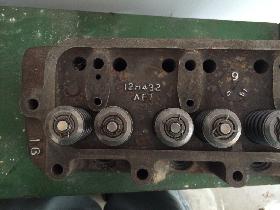
We have known for a long time that there were a few hundred early 1622 engines with machined out "15" heads. However, this is the first I have seen a picture of the top surface showing the casting number of the "15" head to be same as the casting number of the later "16" head castings. This begs the question, how could this happen? If I may speculate, perhaps a few hundred pieces of the new part were cast before there was a change or finalization of design specification. For reason of cost or time constraints, it may have been prudent to machine the first parts to later spec rather than melting them down. Since no parts were released before the final design change, and the early machined parts would be functionally identical to the later parts, there was no need to change the casting number or final machined part number. It is just an odd curiosity that the first parts may have the "15" on top while the later parts have "16" on top, and they have the same casting number.
Now I have a bit of a challenge. For all the people who are in possession of a "15" head machined out to 1622 engine specs (43cc chamber and larger valves), can you please report the casting number and the large cast number on top at back end? I would like to know if all of the first 300 or so machined out heads have the same casting number. This may be a way to determine if the head is a factory production part or if a machined out head might be a later field modification from an earlier casting number.
Addendum, January 26, 2017:
Steven Stockham In Salina, Kansas, USA wrote:
"My car has a 1622 Gold Seal factory engine (replacement under warranty) from 1963, and it has an 1800 head (which came that way from the factory). The 1800 head will mate to the 1622 block and this is not as unusual as you might think".
Addendum, January 19, 2019:
Here is another oddity for the collection. Bert Canal in Middletown, New Jersey has MGA 1600-MKII roadster (c)100363 with (e)16GC-U-H-226. It has a machined out "15" head with casting number 12H432 and casting date in October 1960. This is three months earlier than the prior reported part. Hard to fathom that the 300 or so modified heads would span a casting range of at least three months, the earliest being a full five months before the first production 1600-MK-II car. Now I wonder if there may have been a different application for the 12H432 casting before it was used in the MGA.
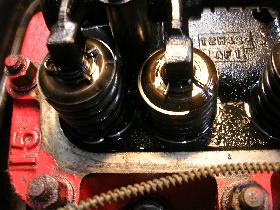
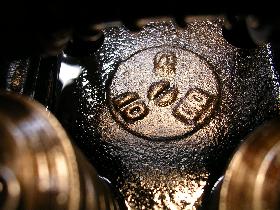
|